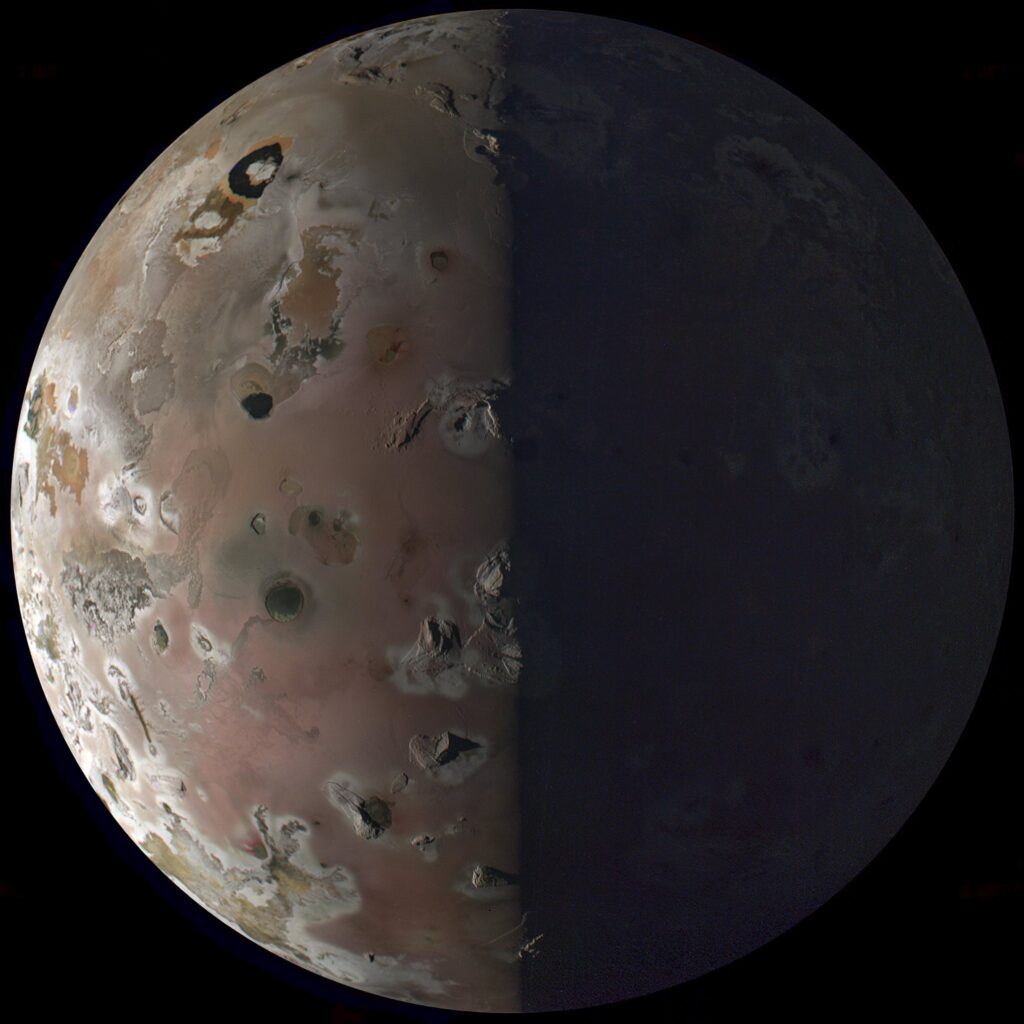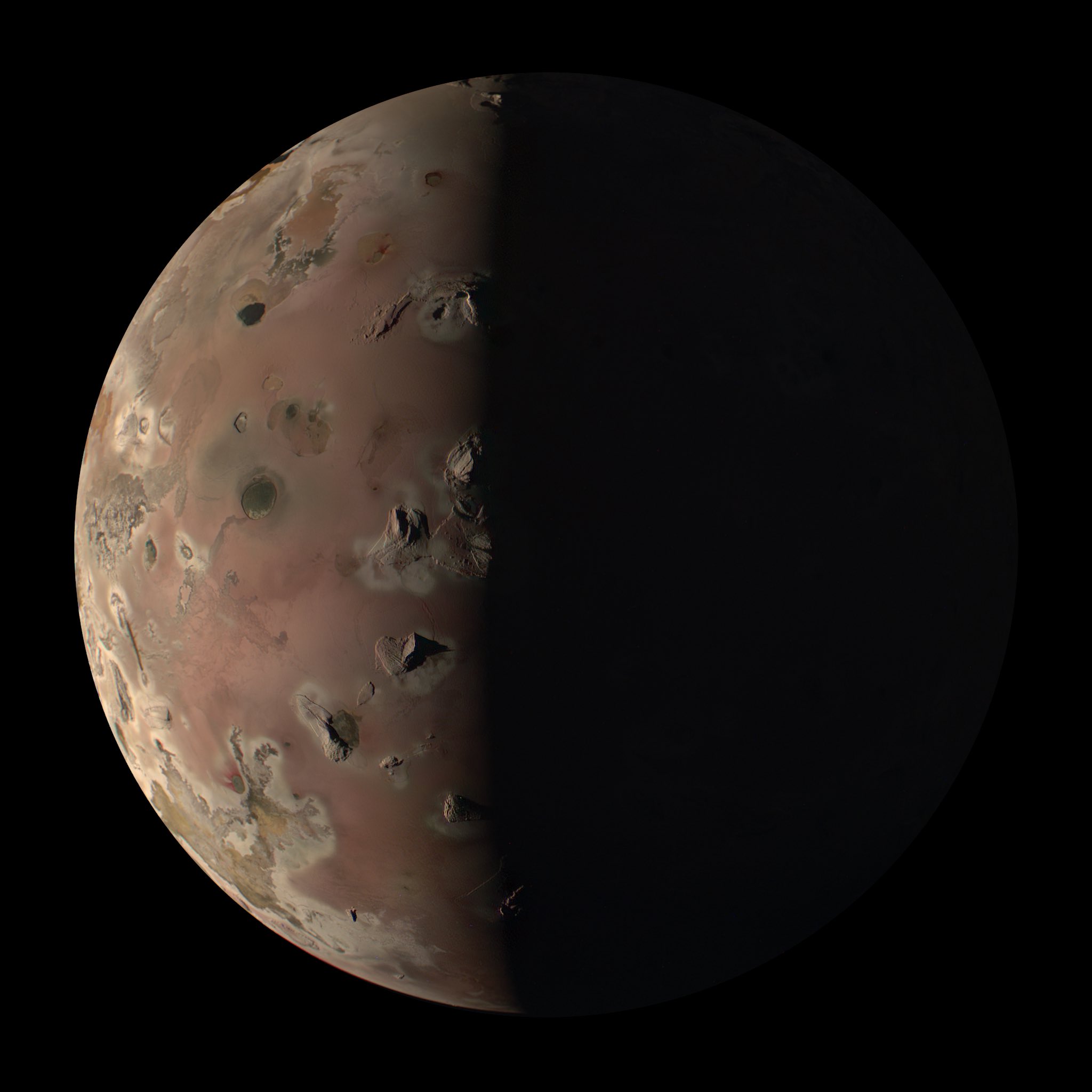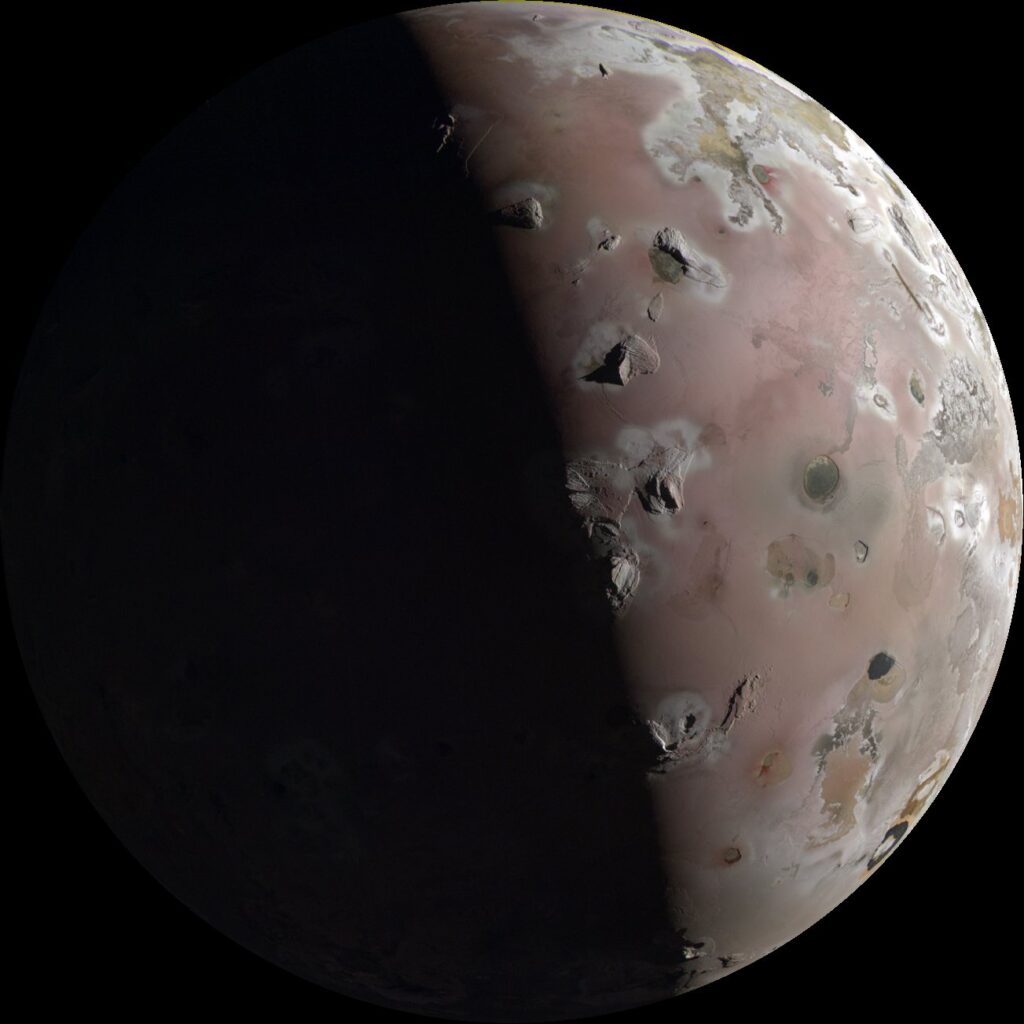The Juno probe made a record-breaking close flyby of Io. It managed to make a number of unique images of the moon, demonstrating its volcanic surface.
Volcanic world
Io is the most volcanically active world in the Solar System. There are hundreds of active volcanoes on the surface of this moon that continuously erupt, altering its landscape. The length of their lava flows can reach hundreds of kilometers. There are also entire lakes on Io filled with molten sulfur.

This incredible activity is due to a combination of tidal interactions between Io and Jupiter, as well as its other large moons, Europa and Ganymede. Incessant eruptions constantly “reshape” the Io map and paint its surface in various shades of yellow, white, red, black and green. Because of this, scientists sometimes jokingly compare this moon to a pizza.
Additionally, gases and solid particles emitted by Io volcanoes interact with Jupiter’s magnetosphere and enhance it. Because of this, the moon’s orbit actually passes inside one of the powerful radiation belts of the giant planet. The radiation level on the surface of Io is such that a person would receive a lethal dose of radiation in just a few hours.
Record-breaking approach to Io
During its mission, Juno has already made a number of visits to Io. But the approach on December 30 became a record. The device flew at a distance of only 1,500 kilometers from its surface. Scientists took this opportunity to study the volcanic moon in more detail as well as take pictures.

The photos obtained by Juno demonstrate how atypical Io looks compared to most other moons of the planets. In addition to a completely different surface color, you can also pay attention to the fact that there are practically no craters on Io. Due to the constant eruptions, the scars from space bombardments are very quickly healed.

On February 3, Juno will meet Io again and pass at a distance of 1,500 km from its surface. In the future, the device will make several more visits to Io, but each time the distance will increase.
Follow us on Twitter to get the most interesting space news in time
https://twitter.com/ust_magazine


